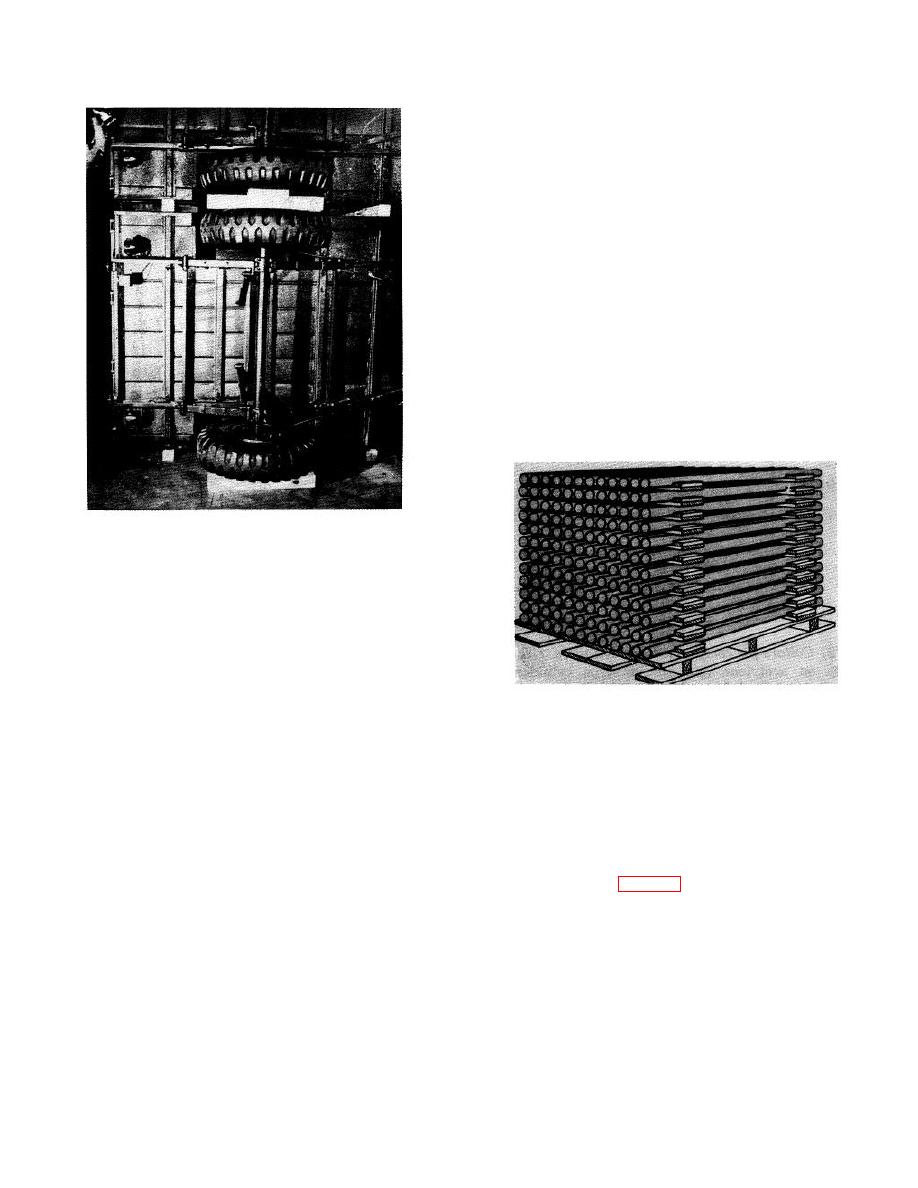 |
|||
|
|
|||
|
|
|||
| ||||||||||
|
|
 TM 38-400/NAVSUP PUB 572/AFMAN 23-210 MCO 4450.14/DLAM 4145.42
full unit loads, without any measurable increase in the
size of the unit load due to dunnage. Double-faced
corrugated fiberboard, thin plywood, plain fiberboard,
heavy wrapping paper, or similar materials may be used
as horizontal dunnage. The type of horizontal dunnage
to be used will depend upon the weight, shape, and
cutting qualities of the item to be palletized.
d. Horizontal binder block dunnage. Another type
of horizontal dunnage used for lateral binding of
palletized loads is binder block dunnage. This dunnage
consists of short lengths of dunnage lumber, cut to any
desired length, with short pieces of blocking secured to
each end. This dunnage is particularly adapted to the
storage of such items as soil pipe, lengths of large pipe,
or similar items which require blocking to prevent rolling
(fig 476). Use of this type binder facilitates the removal
of one or more layers of pipe from the pallet or stack at
any time by use of the fork truck. Also, it results in safe
unit loads and permits high stacking of this type of item.
Figure 4-75. Dunnage used in the storage of
trailers.
b. Vertical dunnage. Vertical dunnage is lumber
cut slightly shorter than the overall height of the load.
When placed the same distance around the edge of the
load or between containers in a vertical position, vertical
dunnage stabilizes the load and prevents crushing of the
containers by absorbing that part of the load which is in
excess of the strength of the container. Also, pieces
Figure 4-76. Binder block dunnage used in the
may be joined at right angles, placed at the four corners
storage of pipe.
of the load, and held in position by strapping. The
proper length of vertical dunnage is determined by the
height of the pallet load. The friction of the loads upon
e. Collars and notched spacers.
each pallet bottom and the proper lengths of vertical
dunnage that will support the load provide the required
(1) Carboy collars. To stack glass carboys
stability for the stack.
and similarly packaged items, the superimposed weight
of the upper pallets must be supported in such a manner
c. Horizontal dunnage. Some form of horizontal
that the weight will be carried by the protective crating
dunnage must be used to build stable unit loads of
around the carboy; this can be accomplished by the use
noninterlocking items which will withstand handling, as a
of the wood collar (fig 4-77). By the use of this collar,
unit load, by mechanical equipment. Pallets often have
carboys can be stacked to permit maximum utilization of
been used for this purpose, by placing one or two
storage cube. Since all carboys are not identical in size
courses of a hard-to-stack item on a pallet and placing
or packaging, the dimensions of the collar will have to
the small unit loads into storage. In such storage, a
be determined by local requirements. However, care
stack 18 feet high may contain as many as seven to
should be taken to assure that the outer edges of the
eight pallets. This is an inefficient use of pallets and
collar rest directly above the sides of the carboy crate.
greatly reduces the quantity of stock which may be
The center member of the collar should be midway
stored in a given storage cube. By the use of horizontal
between the carboys and securely fastened, as this
dunnage, stable noninterlocking items can be made into
member supports the center stringer of the upper pallet.
4-43
|
|
Privacy Statement - Press Release - Copyright Information. - Contact Us |